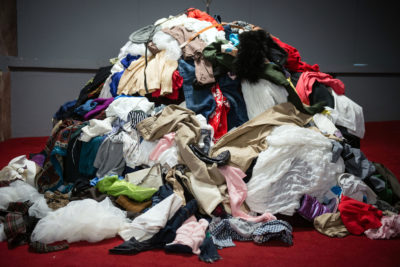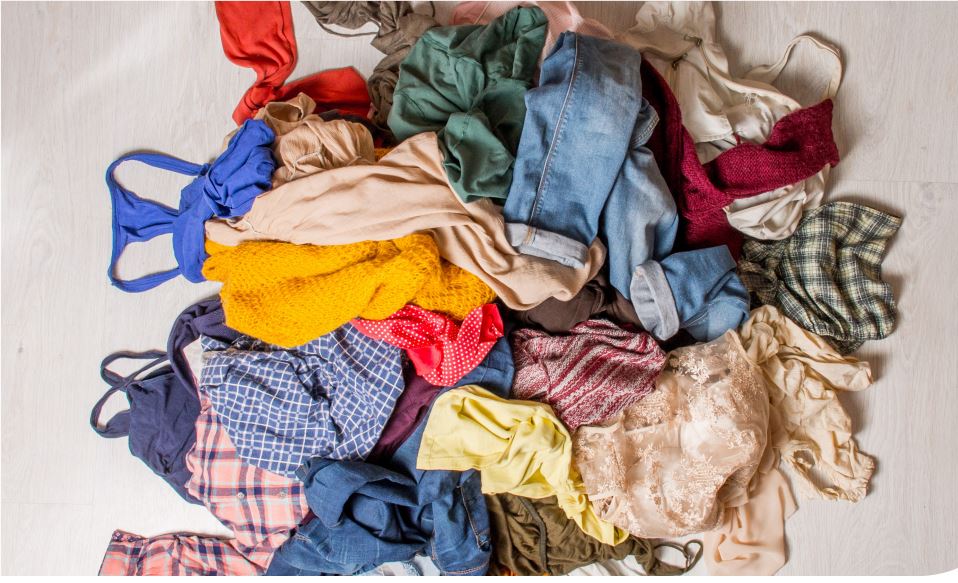New guidelines for running door-to-door textile recycling collections specifically target the issue of areas being flooded by clothes collection bags, according to the organisation responsible for drawing them up.
The Institute of Fundraising (IFR) claims the House-to-House Collections Code of Fundraising Practice, which was published last week (see letsrecycle.com story) will increase the need for charities and their commercial partners to liase with council licensing authorities about when they plan to run collections.
Currently, 44 major charities operate door-to-door collections under an exemption which means they dont have to apply to councils for a licence for a specific collection period.
But, under the code, the 300-plus charity members of the IFR, and commercial companies running door-to-door textile collections on their behalf, are expected to adhere to a number of requirements relating to the frequency of collections, even if they have an exemption.
These include having a clear programme of collections, making every attempt to avoid conflicts with other collections, fixing specific collection dates a year in advance and notifying the authorities of any changes to these plans.
If a member of the public believes the code is being broken, by a charity or their commercial partner they can make a complaint. This will be heard, in the first instance, by the charity itself, but can be referred to regulator the Fundraising Standards Authority if the complainant is not satisfied with the charitys response.
Sarah Tirrell, policy and codes of practice manager at the IFR, explained: This code now specifically refers to goods collections so it puts certain obligations on exempt parties. They dont have to ask for permission to collect but should check with the local authority to make sure they dont mess up their plans.
The issue of areas being over-saturated with clothes collection bags was highlighted by environment secretary Caroline Spelman at WRAPs annual conference in November 2010, where she said it was the single waste-related issue raised most often by her constituents.
Anecdotal evidence suggests some households are receiving several bags a week, with particular concerns being raised over the amount of plastic waste being created when the bags are not used.
Building relationships
Ms Tirrell told letsrecycle.com that the code was seeking to address the issue by building relationships between the various bodies involved in licensing, policing and running door-to-door collections.
For example, she said if the local authority says they have some space the next week, its about trying to reach a compromise, and noted were also trying to get some charities to work with each other on collections.
Commenting on the issue, Warren Alexander, the chief executive of the Charity Retail Association formerly the Association of Charity Shops stressed that all charity members of the CRA had a requirement placed on them to not flood areas under its Code of Charity Retailing.
But, he raised concerns over the number of bogus collectors running door-to-door collections. You get the impression that a lot of the flooding is down to bogus people and bogus charities. A good proportion of the bags could be a result of that, he told letsrecycle.com.
A snap letsrecycle.com survey of five clothes collection bags received in recent weeks revealed one commercial company collecting on behalf of a registered UK charity, one commercial company accredited by the IFR collecting on behalf of a Lithuanian charity and one from a non-accredited commercial firm collecting on behalf of a Zambian charity.
The remaining two make no mention of supporting specific charities, with one stressing that it is a commercial company, while the other includes its status as a limited company in its name. Both, however, claim to support people in need.
Bogus collections
The code aims to address the issue of bogus collections by raising standards, and Ms Tirrell stressed in particular the importance of the guidance drawn up to accompany the code by groups such as the Textile Recycling Association and the CRA.
When a collection is being done by commercial collectors, people do get suspicious sometimes so this explains the different types of collections that happen, she said, noting that it could be disseminated by charities to all those affected by collections.
The guidance gives information to people who need it and might be able to do something on the ground the public, local authorities and the police, she added.
Ms Tirrell noted that, in the wake of the ministerial round-table meeting held in January 2011 to address clothes collections issues (see letsrecycle.com story), there was also work ongoing to make it more clear who the public should contact if they had concerns over a collection.
The public can go to the Charity Commission, the police or Trading Standards theres a lot of work going on between the police and Trading Standards to make clear whose responsibility it is, she said.











Subscribe for free